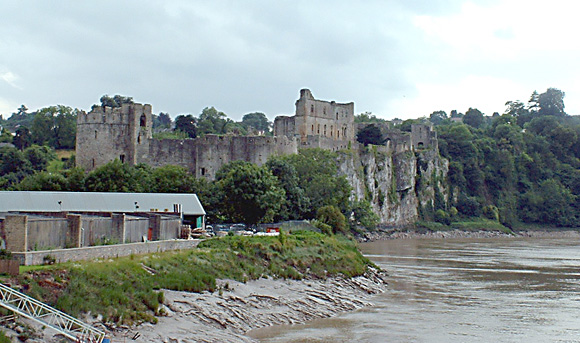Chepstow Castle, located in Chepstow on top of cliffs overlooking the River Wye, is the oldest surviving stone fortification in Britain. It was built under the instructions of the Norman lord William fitzOsbern from 1067, and was the southernmost of a chain of castles built along the English-Welsh border.
The speed with which William the Conqueror committed to the creation of a castle in Chepstow is testament to its strategic importance. At the time, the kingdoms in the area were independent of the English crown and the castle in Chepstow provided a way to suppress the Welsh from attacking Gloucestershire. It controlled an important crossing point on the River Wye, itself a major artery of communications to Monmouth and Hereford. The precipitous limestone cliffs beside the river, and a valley (the Dell) to the landward side, afforded an excellent defensive location.
The Great Tower was probably completed by about 1090. It was constructed in stone from the first (as opposed to wood, like most others built at this time), marking its importance as a defensive stronghold on the border between England and Wales. Further fortifications were added over the succeeding centuries by William Marshal and son around 1200, and by Roger Bigod III from the 1270s.
From the 14th century, and in particular the end of the wars between England and Wales in the early 15th century, its defensive importance declined. From the 16th century, the castle became more designed for occupation as a great house, though it was to see action again during the English Civil War, when it was held by the Royalists and besieged in 1645 and 1648. After the war, the castle was used as a prison. Its occupants included Bishop Jeremy Taylor, and Henry Marten, one of the commissioners who signed the death warrant of Charles I, who was imprisoned here before his death in 1680.
From 1690 onwards it was left to decay, and in the late 18th century its ruins became, with other sites in the Wye valley, a focus for tourists seeking views of the "picturesque".
In 1910/11, the castle and adjoining river bed were the site of well-publicised excavations by Dr Orville Ward Owen, who was attempting to find secret documents to prove that Shakespeare's plays had in fact been written by Francis Bacon. In 1913, the movie "Ivanhoe", starring King Baggot, was made in the grounds.
Chepstow Castle is open to the public and is now in the care of Cadw. |








